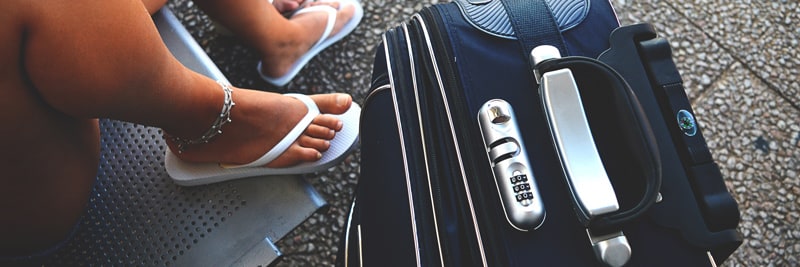Adolescence is a critical time of growth, self-discovery, and, unfortunately, significant challenges. Some teens struggle with behavioral issues, emotional regulation, mental health disorders, and unhealthy coping mechanisms that interfere with their daily lives. When...
Recent Posts
After Residential Treatment: Helping Teens Transition Back Home
Residential treatment can be life-changing for a teen struggling with mental health, trauma, or behavioral challenges. But what happens after your child returns home? The transition back to daily life is a critical period — one that requires patience, structure, and...
How Residential Treatment Supports Teens with Co-Occurring Disorders
Navigating adolescence is challenging enough, but for teens grappling with co-occurring disorders, the journey can feel insurmountable. Co-occurring disorders, also known as dual diagnoses, refer to the presence of two health disorders occurring at the same time....
A Parent’s Guide To Navigating Grief In Teenagers
Grief is a complex emotion that can be challenging for teens to navigate. According to the Childhood Bereavement Estimation Model (CBEM), 1 in 12 children and teens in the U.S. will experience the death of a parent or sibling by age 18. While grief is usually...
How Long Is Residential Treatment for Teens?
If your child is about to begin a stay at a residential treatment center, you’re bound to have a lot of questions. What types of therapy will be involved? Will our family be allowed to visit? And, of course, how long is a teen residential treatment program? In this...
Is Residential Treatment Considered Inpatient or Outpatient?
If you’ve never engaged with residential treatment centers before, it’s common to ask: is residential treatment considered inpatient or outpatient? Well, the answer is simple: our residential teen treatment centers are considered inpatient because teens stay at our...
Benefits of Residential Treatment for Teens: When to Choose It Over Other Treatment Programs
When seeking help for your teen, it’s important to know the benefits of residential treatment teens can take advantage of. For teens suffering from mental health disorders, behavioral disorders, psychological disorders, or addiction issues, there are a variety of...
Does Insurance Cover Teen Residential Treatment?
How Much Does Residential Treatment Cost? Cost of Residential Treatment The cost of residential treatment varies between each Residential Treatment Center (RTC). It may range from free (which is very uncommon) to tens of thousands of dollars per month. And if you are...
3% of Teens Identify as Transgender or Gender Nonconforming in America
How Many Transgender Teens Are There? Approximately 150,000 American teens (ages 13 to 17) identify as transgender in the United States today. Of course, there is no general age in which people typically “discover” or “come out” as transgender. Nonetheless, more and...
Recognizing Signs of Teen Depression: A Guide for Parents
It is very common for children and adolescents to experience occasional moodiness or periods of sadness. The causes of teen depression are multifaceted, involving biological, environmental, and social factors such as bullying, mental health conditions, stressful life...
Distinguishing Between Signs of Depression or “Moodiness” in Teens
Parents often wonder how to distinguish normal teenage mood swings and rebellions from actual symptoms of depression. Fortunately, there are several ways to tell. As many as 1 in 5 teenagers will experience depression at some point during adolescence. Unfortunately,...
Social Anxiety Disorder in Teens: Signs, Symptoms, and How to Help
What is Social Anxiety Disorder? Social anxiety disorder (SAD) affects 1 out of 3 adolescents between 13 and 18 years old. Over 19 million people across America suffer from social anxiety disorder (SAD) today, including a significant number of young adults. It is...
Teen Depression Prevention: Parent, Friend, and Support Tips
At any given time, one out of every five teenagers is experiencing major depression. If you are a parent to an adolescent or teenager, you are likely familiar with the moodiness inherent to this age group. Mood swings are common, as teens are experiencing a vast...
How to Talk to Your Teen About Depression
Teen depression is more common — and more serious — than many parents realize. While emotional ups and downs are a normal part of adolescence, persistent sadness, irritability, or withdrawal may point to something deeper. Knowing how to talk to your teenager about...
Managing Expectations With Teens
As a parent of an adolescent, teen, or young adult, your attitudes, actions, and beliefs can have a tremendous impact on your child’s well-being. Your teen is experiencing the challenging process of transitioning from childhood to adulthood. As someone who has gone...
What to Pack for Residential Treatment

Entering residential treatment can be a difficult, confusing, and stressful time for both the parents and the adolescent or teenager going to treatment. Before physically entering a residential treatment program, patients will learn what to expect from their stay in a variety of different ways, one of which being what a patient is allowed (and is not allowed) to bring.
Parents often think the process of getting their child to agree to go to residential treatment is one of the most difficult parts of the process. And while that part can be extremely difficult, there are other challenges (which some parents are unaware of) to face before an adolescent or teenager actually admits to the treatment center, one being the packing process.
While helping your adolescent or teenager pack for residential treatment, it is important to focus on items that foster comfort, healing, and a sense of home. This also means leaving anything potentially harmful at home – including drugs, alcohol, or weapons. Upon arrival at the treatment center, it is likely your child’s luggage will be searched (this is common practice at all residential treatment centers as a way to maintain a safe environment for all patients). Nonetheless, when entering an inpatient or residential treatment center facility, patients will need to bring more than just the necessities with them (in order to make their stay as comfortable as possible). While the list of approved items can absolutely vary, depending on the residential treatment center, there are some things that remain relatively consistent across the board.
Items to Bring
In general, it is usually encouraged patients of adolescent/teen residential treatment centers bring the following items:
- Identifying information – this includes a driver’s licenses or other form of identification
- Health information and medications – make sure your adolescent or teen packs all of his or her prescribed medications (in original bottles with prescription label(s) still attached), in addition to his or her health insurance card.
- Contact lenses and/or glasses (if applicable)
- Important contact information with phone numbers and addresses – patients are allowed phone calls at various times and are able to mail letters to friends, family, etc.
- Comfortable clothing – residential treatment centers tend to be relaxed, casual atmospheres focused on healing the body and the mind. Make sure your child packs clothing that matches this – exercise clothes/gym shoes, jeans, and casual tops promote comfort, relaxation, mobility, and shifts the focus away from appearance.
- The essential toiletries – patients entering residential treatment centers should bring their own person hygiene items. Many treatment centers will request patients bring new (or unopened) items. Pack toiletries such as hair care supplies (shampoo and conditioner, a brush, and hair ties and/or hair clips)
- Adequate outerwear – your child should pack a jacket, coat, sweater, sweatshirt, etc. depending on the season and the climate of the residential treatment center’s location
- Accessories – keeping in mind the location and the climate of the location of the treatment center, it may be advisable for your adolescent or teenager to bring certain accessories such as a hat, belt, tote bag/backpack/purse. If your child wears jewelry, it is advised he or she only bring the items worn on an everyday basis, with more valuable items remaining at home.
- Pajamas/slippers/robe
- Bathing suit
- Stamps (for mailing letters)
- Photos – of family and/or friends
- Notebook or journal – bringing a journal or a notebook will allow your child to chronicle his or her thoughts, feelings, and emotions throughout the treatment process.
- Books and magazines –your child will likely get downtime during his or her stay at residential treatment. During this downtime, he or she may want to read. But it is important the books and/or magazines that are brought are “appropriate” reading material. Appropriate reading material means nothing overtly violent or promoting of drug/alcohol use, or sexual acting out.
- Pens, pencils, art supplies – while many treatment centers provide a variety of art supplies (as part of an art therapy program or otherwise), if your adolescent or teenager has specific art supplies or writing materials he or she likes to use, it is acceptable (and often encouraged) to pack them.
- Mementos – sometimes, adolescents and teenagers struggle with feeling homesick while away at residential treatment. Thus, little reminders of home can make being away a bit easier, and help your child feel more comfortable in his or her new surroundings.
Do Not Bring
There are certain items that your adolescent or teenager should steer clear of packing, when he or she is preparing to enter a residential treatment center. Although your child may feel compelled to bring any of the following, it is important you encourage him or her to leave them behind, as likely they will be taken during the luggage search regardless.
- Weapons – any objects that could be viewed as dangerous will not be allowed in a residential treatment center. If brought, they will be confiscated during the bag search process.
- Any alcohol, illegal drugs or prescription drugs not prescribed to you
- Mouthwash or other products containing alcohol (there are some brands of mouthwash
- Valuables – patients of inpatient treatment centers are usually recommended to leave any valuables or large amounts of cash at home. This is because most treatment centers will not be held responsible for any stolen or misplaced items.
- Revealing or “provocative” clothing (low cut shirts, strapless tops, short shorts/skirts/dresses, anything very form-fitting)
- Food items or drinks – outside food, snacks, and drinks will not be allowed in the residential treatment facility.
- Lighters, matches, candles, or incense
“Maybe” Items
There are certain items that are allowed by some treatment centers, and not by others. The following items are possibly allowed, but it is advised to check with the specific treatment center your adolescent or teenager will be attending, in order to be sure.
- IPod or MP3 player
- Cell phone
- Laptop computer
- Musical instrument(s)
- Makeup
- Hair dryer/hair curler/hair straightener
- Razors
- Knitting needles/yarn/crochet hooks
- Cameras
Helping your child pack for his or her stay in residential treatment can be tricky. Communicating with the facility prior to packing, and reviewing what is (and is not) allowed at that specific treatment center can help clarify, and make the packing process a little less stressful.
Polaris Teen Center is a residential treatment facility for teens and adolescents suffering from severe mental health disorders. Our highly accredited facility is fully licensed and certified in Trauma Informed Care and is a part of the Behavioral Health Association of Providers (formerly AATA).
Previous Post
Next Post
Related Posts
A Parent’s Guide To Navigating Grief In Teenagers
Grief is a complex emotion that can be challenging for teens to navigate. According to the Childhood Bereavement Estimation Model (CBEM), 1 in 12 children and teens in the U.S. will experience the death of a parent or sibling by age 18. While grief is usually...
How Long Is Residential Treatment for Teens?
If your child is about to begin a stay at a residential treatment center, you’re bound to have a lot of questions. What types of therapy will be involved? Will our family be allowed to visit? And, of course, how long is a teen residential treatment program? In this...
Benefits of Residential Treatment for Teens: When to Choose It Over Other Treatment Programs
When seeking help for your teen, it’s important to know the benefits of residential treatment teens can take advantage of. For teens suffering from mental health disorders, behavioral disorders, psychological disorders, or addiction issues, there are a variety of...
Does Insurance Cover Teen Residential Treatment?
How Much Does Residential Treatment Cost? Cost of Residential Treatment The cost of residential treatment varies between each Residential Treatment Center (RTC). It may range from free (which is very uncommon) to tens of thousands of dollars per month. And if you are...
3% of Teens Identify as Transgender or Gender Nonconforming in America
How Many Transgender Teens Are There? Approximately 150,000 American teens (ages 13 to 17) identify as transgender in the United States today. Of course, there is no general age in which people typically “discover” or “come out” as transgender. Nonetheless, more and...
Recognizing Signs of Teen Depression: A Guide for Parents
It is very common for children and adolescents to experience occasional moodiness or periods of sadness. The causes of teen depression are multifaceted, involving biological, environmental, and social factors such as bullying, mental health conditions, stressful life...
Distinguishing Between Signs of Depression or “Moodiness” in Teens
Parents often wonder how to distinguish normal teenage mood swings and rebellions from actual symptoms of depression. Fortunately, there are several ways to tell. As many as 1 in 5 teenagers will experience depression at some point during adolescence. Unfortunately,...
Social Anxiety Disorder in Teens: Signs, Symptoms, and How to Help
What is Social Anxiety Disorder? Social anxiety disorder (SAD) affects 1 out of 3 adolescents between 13 and 18 years old. Over 19 million people across America suffer from social anxiety disorder (SAD) today, including a significant number of young adults. It is...
Teen Depression Prevention: Parent, Friend, and Support Tips
At any given time, one out of every five teenagers is experiencing major depression. If you are a parent to an adolescent or teenager, you are likely familiar with the moodiness inherent to this age group. Mood swings are common, as teens are experiencing a vast...







